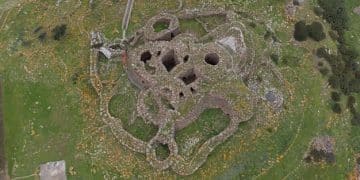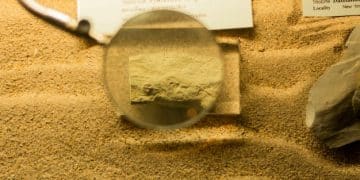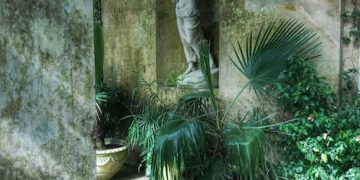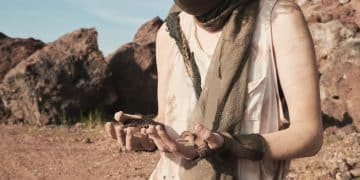New Insights into Mound Builders: Challenging Ancient US Theories
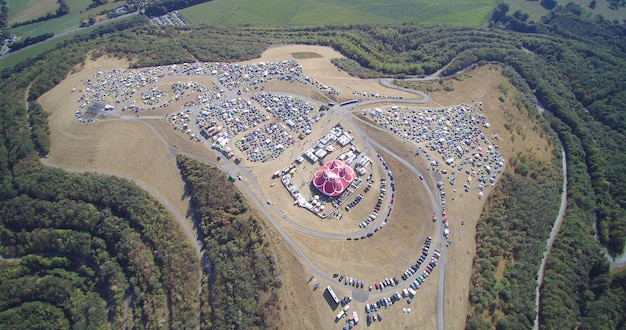
New archaeological findings are consistently challenging long-held traditional theories about the complex societies of the ancient Mound Builders in the US, revealing a more nuanced and sophisticated understanding of their culture, engineering, and societal structures than previously acknowledged.
For centuries, the enigmatic earthworks scattered across the North American landscape, known as those of the Mound Builders, have fascinated and mystified. Yet, new archaeological evidence is not merely adding to our knowledge; it’s actively challenging and reshaping New Insights into the Mound Builders: Archaeological Evidence Challenging Traditional Theories About Ancient US Societies, prompting us to reconsider what we thought we knew about these ancient cultures and their sophisticated achievements.
Re-evaluating the “Mound Builder Myth”: Dispelling Early Misconceptions
The term “Mound Builder” itself is a broad generalization referring to various pre-Columbian Indigenous peoples who constructed diverse earthworks across a vast area of eastern North America. For a long time, particularly in the 19th century, a pervasive “Mound Builder Myth” circulated, suggesting that these complex structures could not have been built by the ancestors of contemporary Native Americans.
This myth, often fueled by racial bias and a desire to justify European expansion, posited that a lost, superior race built the mounds. However, archaeological advancements, meticulous research, and the consistent oral histories of Indigenous peoples have overwhelmingly debunked this notion, proving the direct lineage between the Mound Builders and modern Native American communities.
The Genesis of Misunderstanding
Early European settlers encountered these monumental earthworks and struggled to reconcile their complexity with their preconceived notions of Indigenous societies. Lacking a full understanding of the intricate social organization and engineering prowess required, they often attributed the mounds to foreign civilizations, such as Vikings, Egyptians, or even Atlanteans.
- Lack of Historical Context: Initial European encounters occurred long after the peak of many Mound Builder societies, leading to a void in direct historical understanding.
- Ethnocentric Bias: Prevailing 19th-century views often underestimated the capabilities of non-European cultures, hindering impartial interpretations.
- Desire for Land Justification: Proposing a “lost race” facilitated the narrative of Native Americans as transient occupants, rather than long-term, complex inhabitants.
The persistence of these myths obscured the true ingenuity and profound cultural heritage of Indigenous North America. Today, archaeology is not just correcting these historical inaccuracies but actively celebrating the sophisticated societies that truly built these remarkable structures. Understanding the historical roots of these misconceptions is crucial for appreciating how far our archaeological understanding has come and how new findings continue to refine our narrative.
Modern archaeological methods, including carbon dating, stratigraphy, and detailed comparative analyses of artifacts, have provided definitive evidence linking the mound builders to historical Native American tribes. This re-evaluation isn’t just academic; it challenges lingering colonial narratives and affirms the deep Indigenous roots in the landscape.
Advanced Engineering and Astronomical Alignments Revealed
Beyond simple earthworks, recent investigations have unveiled the extraordinary engineering capabilities and profound astronomical knowledge embedded within many Mound Builder sites. These weren’t haphazard piles of earth but meticulously planned, often geometrically precise structures aligned with celestial events, reflecting deep cosmological understanding.
For instance, sites like Poverty Point in Louisiana, dating back to 1700-1100 BCE, showcase massive concentric ridges and mounds, some reaching 70 feet in height. The scale and precision required to construct such a complex defy previous estimations of early North American societies’ technological limits. It suggests a labor organization and surveying expertise akin to advanced ancient civilizations globally.
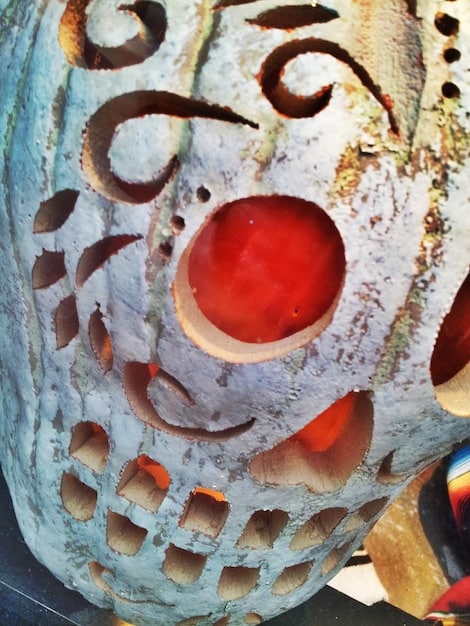
Precision in Planning and Construction
New remote sensing technologies, like LiDAR (Light Detection and Ranging), have been instrumental in revealing hidden structures and precise alignments previously obscured by dense vegetation. What was once seen as simple undulations in the terrain is now understood as elaborate, symmetrical earthworks, often forming perfect circles, squares, and octagons.
- Geometric Perfection: Sites like Newark Earthworks in Ohio demonstrate perfect geometric shapes spanning vast areas, suggesting sophisticated surveying techniques without modern tools.
- Massive Earth Moving: The sheer volume of earth moved for these constructions, often compacted and layered, speaks to incredible communal efforts and sophisticated engineering principles for stability.
- Water Management: Evidence points to deliberate channeling and reshaping of waterways, indicating an advanced understanding of hydrology for both agriculture and ritual purposes.
The celestial alignments found at sites like Cahokia, a sprawling Mississippian city near modern-day St. Louis, are particularly striking. Woodhenge, a series of timber circles within Cahokia, functioned as an astronomical observatory, tracking solstices and equinoxes, crucial for agricultural cycles and ceremonial calendars. This level of astronomical observation and integration into landscape architecture points to a society deeply connected to the cosmos and capable of complex, long-term planning.
These findings continue to push the boundaries of what was thought possible for societies of their era in North America. They underline the need to shed outdated perspectives and truly appreciate the innovative spirit and intellect of these ancient peoples.
Societal Complexity: Hierarchy, Trade, and Ritual Life
Traditional theories often depicted Native American societies as largely egalitarian or loosely organized, especially in the pre-contact era. However, emerging archaeological data strongly suggests that many Mound Builder cultures, particularly those of the Mississippian period (c. 800-1600 CE), exhibited a highly stratified social hierarchy, extensive trade networks, and a rich, complex ritual life that permeated all aspects of their existence.
Cahokia stands as a paramount example. With a peak population estimated at 10,000-20,000 people, it was larger than London was at the time and functioned as a bustling urban center. The presence of Monk’s Mound, the largest prehistoric earthen structure in the Americas, towering over residences and plazas, signifies a clear social hierarchy with elites commanding vast resources and labor.
Evidence of Stratification and Specialization
Burial practices offer significant insights into social stratification. Elite burials often contained elaborate grave goods, including finely crafted copper plates, mica effigies, marine shells from distant coasts, and exotic stones. These items indicate specialized craftsmanship and access to rare resources, differentiating them from common burials.
- Elite Residences: Post holes and foundations suggest larger, more elaborate dwellings for leaders, often situated atop mounds or near central plazas.
- Specialized Crafts: The discovery of workshops for pottery, stone tool production, and shell carving points to a division of labor and specialized artisans.
- Foodways: Dietary analyses of skeletal remains sometimes show differential access to certain foods, reflecting social standing.
Trade networks extended far beyond local boundaries. Obsidian from the Rockies, copper from the Great Lakes, shells from the Gulf of Mexico, and mica from the Appalachian Mountains have all been found at Mississippian sites. This extensive exchange indicates not just economic interaction but also cultural diffusion, sharing of ideas, and potentially diplomatic ties over vast geographic areas.
Ritual life was central, with mounds often serving as platforms for ceremonies, astronomical observations, and burials. Artifacts depict complex iconography related to the Southeastern Ceremonial Complex (SECC), a shared set of beliefs and symbols across various Mississippian groups. These symbols often depict themes of fertility, war, and the underworld, suggesting a sophisticated cosmological framework influencing daily life and political organization.
These discoveries challenge the simplistic portrayals of these societies, revealing a dynamic history of complex social structures, extensive economic reach, and deeply embedded spiritual practices that were far from primitive.
Challenging Agricultural Narratives: Beyond Maize Monoculture
The conventional narrative often highlights maize (corn) as the primary agricultural staple that enabled the rise of Mississippian societies. While maize undeniably played a significant role, particularly in later periods, new archaeological evidence suggests a more diverse and nuanced agricultural landscape, challenging the idea of a simple maize monoculture.
For centuries, the Indigenous peoples of North America developed and cultivated a wide array of native plants long before the advent of maize agriculture, a process known as the Eastern Agricultural Complex (EAC). This included crops like goosefoot (chenopodium), sumpweed (marshelder), sunflower, and squash. These ancient domesticates provided crucial sustenance for millennia and continued to be important even after maize was introduced.
Dietary Diversity and Local Adaptations
Archaeobotanical analysis, examining plant remains from ancient sites, is revealing a far richer dietary picture. Evidence indicates that communities adapted their agricultural strategies to local environments and cultural preferences, fostering a resilient and diverse food system.
- Pre-Maize Staples: Many early Mound Builder societies thrived for thousands of years on a diet rich in EAC crops, supplementing with wild game, fish, and gathered plants.
- Integrated Systems: Even with maize, communities often maintained a mixed economy, blending maize cultivation with traditional EAC crops, hunting, and foraging, rather than solely relying on corn.
- Regional Variations: The degree of maize dependence varied significantly by region and time period, reflecting different environmental conditions and cultural choices.
Furthermore, new research into paleoclimate and soil analysis is providing context to agricultural decisions. Periods of drought or environmental stress may have led to greater reliance on more resilient native crops or a diversification of food sources to mitigate risk. This suggests a sophisticated understanding of ecological principles and sustainable practices.
The findings encourage a re-evaluation of how we characterize “agricultural revolution” in North America. It wasn’t a sudden shift to maize but a long, complex process of domestication, adaptation, and integration of various plant foods, highlighting the deep agricultural knowledge and innovation of the continent’s first farmers. This broader understanding allows for a more accurate portrayal of their economic ingenuity.
Warfare and Fortifications: A More Complex Picture
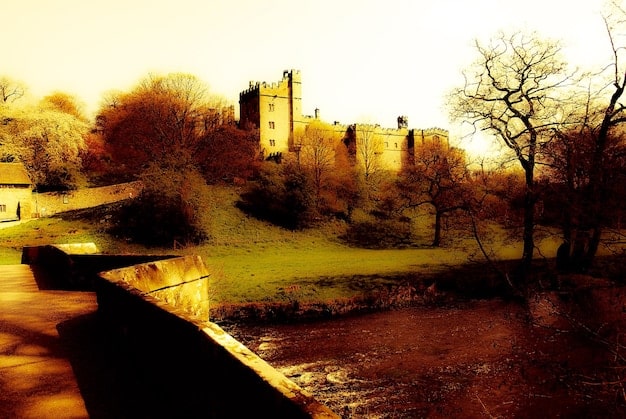
While often romanticized as peaceful societies, anthropological and archaeological record indicates that warfare was a significant component of life for many ancient societies, including the Mound Builders. New archaeological evidence, particularly from sites with extensive fortifications and evidence of violent encounters, challenges overly simplistic portrayals of these groups as uniformly pacific, revealing a more nuanced and sometimes brutal picture of inter-group dynamics.
Fortified villages, such as the Late Mississippian site of Etowah in Georgia, featuring elaborate palisades and defensive structures, attest to the need for protection against external threats. These aren’t isolated occurrences; many sites across various periods show signs of deliberate efforts to defend against attack or to launch offensives.
Indications of Conflict
Skeletal remains bear witness to the realities of ancient conflict. Analyses of bones have revealed instances of trauma consistent with violence, including:
- Skeletal Trauma: Evidence of parry fractures (breaks to the forearm from blocking blows), projectile points embedded in bones, and skull damage are common in some burial populations.
- Mass Burials: The discovery of mass graves, sometimes with signs of quick and disorganized internment, can suggest episodes of intense warfare or raids.
- Strategic Locations: Settlements often chose locations with natural defensive advantages, reinforcing the idea of a need for security.
Interpretations of warfare vary somewhat, ranging from endemic low-level raiding for resources or prestige to larger-scale conflicts resulting from territorial disputes, population pressures, or the collapse of complex political structures. The rise and fall of certain cultural centers, like Cahokia, may have been influenced by periods of increased conflict, leading to decentralization or shifts in power.
While definitive answers are still emerging, archaeologists are employing diverse methodologies to piece together a clearer picture. This includes detailed analysis of settlement patterns, defensive architecture, weapon types, and osteological evidence. Understanding the role of warfare provides a more complete, if at times unsettling, view of the challenges and realities faced by these ancient societies, moving beyond idealized notions towards a more grounded historical understanding.
Reconsidering Collapse and Continuity: Beyond Simplistic Narratives
The “collapse” of major Mound Builder centers, particularly the Mississippian chiefdoms, is a subject of ongoing archaeological inquiry. Traditional explanations often invoked single, catastrophic events or simple environmental degradation. However, contemporary research suggests a more complex interplay of factors leading to periods of decline, transformation, and often, surprising continuity into historic Native American cultures.
Major population centers like Cahokia did not simply vanish. Instead, they experienced significant demographic shifts, depopulation, and a restructuring of societal organization, often over generations. This process was rarely abrupt and was typically influenced by a combination of environmental, social, and political stressors.
Multifaceted Factors and Resilience
New evidence points to a combination of internal and external pressures contributing to the eventual decline of large chiefdoms:
- Climatic Shifts: Periods of prolonged drought or severe weather events, which can be identified through paleoclimate data, would have stressed agricultural systems and food security.
- Resource Exhaustion: Intensive agriculture and large populations may have led to local deforestation, soil depletion, or overhunting of local game.
- Internal Strife: Evidence of fortification and skeletal trauma suggests internal conflict or rivalries could have destabilized polities.
- Disease and Demographics: While post-contact diseases were devastating, even limited pre-contact epidemics could have had significant local impacts.
Crucially, the “end” of the Mound Builder traditions in many areas wasn’t an absolute disappearance but often a transformation into more decentralized societies or direct predecessors of historical tribes. Many Southeastern and Midwestern Native American nations, such as the Muscogee (Creek), Cherokee, Choctaw, and Natchez, maintain strong oral traditions and cultural links to the Mound Builders, underscoring continuity rather than complete rupture.
Archaeological work is increasingly focused on identifying these threads of continuity—how practices, beliefs, and even architectural styles adapted and persisted across periods of significant change. This perspective honors the resilience and adaptability of Indigenous cultures, challenging the colonial notion that their complex societies simply “vanished” upon European arrival. The story is one of enduring heritage, not just a dramatic end.
Future Directions: Unveiling More Mound Builder Secrets
The field of Mound Builder archaeology is vibrant and dynamic, continually being reshaped by new technologies, interdisciplinary collaborations, and a growing emphasis on Indigenous perspectives. The future promises even more profound insights that will continue to challenge and enrich our understanding of ancient North America.
Technological advancements are at the forefront. As mentioned, LiDAR has revolutionized the discovery of earthworks beneath dense forest canopies. Ground-penetrating radar (GPR), magnetometry, and electrical resistivity surveys allow archaeologists to non-invasively map subsurface features, revealing buried structures, hearths, and activity areas without disturbing fragile sites.
Emerging Methodologies and Perspectives
Beyond technology, the methodological landscape is evolving. Greater emphasis is being placed on:
- Interdisciplinary Research: Integrating insights from environmental science, anthropology, history, and ethnobotany to build more holistic interpretations.
- Mitochondrial DNA and Isotopic Analysis: Offering direct insights into population movements, dietary patterns, and genetic relationships, further strengthening links to modern Indigenous communities.
- Indigenous Archaeology: Prioritizing the involvement of descendant communities, respecting traditional knowledge, and ensuring research benefits and empowers Native American voices in shaping the narrative of their ancestors. This collaboration ensures that the research is culturally sensitive and ethically sound.
The focus is shifting from merely identifying structures to understanding the daily lives, beliefs, and environmental interactions of these peoples. Future research will likely delve deeper into topics like child-rearing practices, gender roles, specific ritual performances, and the precise environmental impacts of their large-scale constructions.
As these new insights accumulate, the picture of the Mound Builders becomes increasingly rich and complex, moving beyond simplified historical accounts to reveal sophisticated, adaptable, and deeply spiritual societies that shaped the landscape and history of North America. This ongoing journey of discovery ensures that the stories of the Mound Builders will continue to inspire and inform us for generations to come, consistently challenging and refining prevailing theories about their enduring legacy.
| Key Insight | Brief Description |
|---|---|
| ✨ Debunking Myths | Archaeology definitively links Mound Builders to modern Native Americans, disproving “lost race” theories. |
| 📐 Engineering Prowess | Sites like Newark Earthworks show precise geometric and astronomical alignments, indicating advanced surveying. |
| 🌐 Complex Societies | Evidence reveals stratified hierarchies, extensive trade networks, and rich ritual lives among Mound Builders. |
| 🌾 Diverse Agriculture | Beyond maize, Mound Builders cultivated a wide range of native plants, highlighting adaptable food systems. |
Frequently Asked Questions About Mound Builders
▼
The Mound Builders were various pre-Columbian Indigenous peoples in North America who constructed earthworks for ceremonial, burial, and residential purposes over thousands of years, from roughly 3500 BCE to the 16th century CE. They include diverse cultures like the Adena, Hopewell, and Mississippian, each with unique traditions but unified by their monumental earthwork construction.
▼
The “Mound Builder Myth” was a 19th-century false belief that the sophisticated earthworks in the Americas were built by a “lost race” unrelated to Native Americans. This myth, driven by ethnocentric biases, has been thoroughly disproven by archaeological and historical evidence, which confirms the direct ancestry between the Mound Builders and contemporary Indigenous peoples.
▼
Mound Builders constructed a wide variety of earthworks, including conical burial mounds, effigy mounds shaped like animals, flat-topped platform mounds for temples and elite residences, and complex geometric enclosures. These structures often reflected astronomical alignments and served as centers for spiritual ceremonies, community gatherings, trade, and defense.
▼
Significant Mound Builder sites are primarily concentrated in the eastern and central United States. Key examples include Cahokia Mounds near St. Louis, Missouri (Mississippian culture), the Newark Earthworks in Ohio (Hopewell culture), and Poverty Point in Louisiana (Late Archaic period). These sites showcase the diversity and scale of their architectural achievements.
▼
New technologies like LiDAR, ground-penetrating radar, and remote sensing are revolutionizing archaeology by revealing previously hidden structures and providing non-invasive insights into subsurface features. These tools allow researchers to map entire ancient landscapes with unprecedented detail, uncovering new evidence of complex settlements, agricultural systems, and trade networks.
Conclusion
The archaeological investigation into the Mound Builders continues to be a dynamic and illuminating field, continually challenging and enriching our understanding of ancient North American history. Far from being simple or primitive, these societies were characterized by profound engineering acumen, complex social stratification, sophisticated agricultural practices, and intricate spiritual lives. The persistent efforts of archaeologists, often in collaboration with descendant Indigenous communities, are steadily dismantling historical myths and revealing a narrative of innovation, resilience, and deep connection to the land that resonates powerfully even today. As new technologies emerge and perspectives broaden, the secrets held within these monumental earthworks promise to further reshape our collective view of the continent’s vibrant past.
